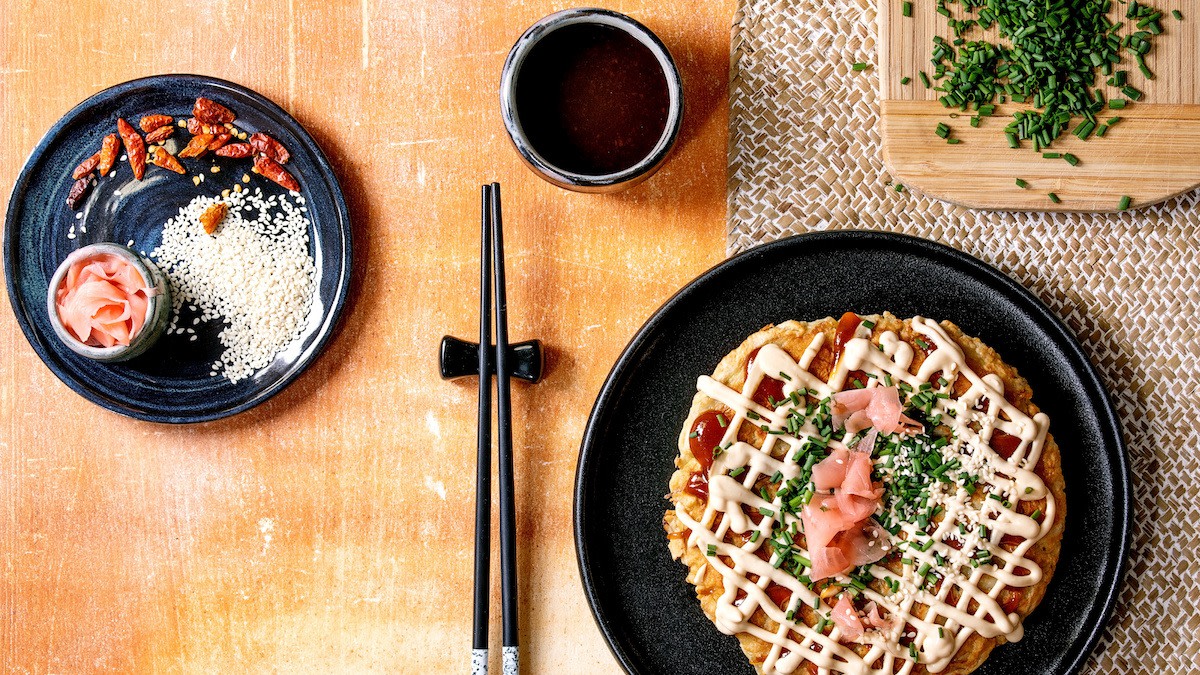Essential Japanese Sauce Guide: 11 Types of Japanese Sauces
Written by MasterClass
Last updated: Jun 7, 2021 • 3 min read
The foundation of traditional Japanese cuisine is formed by five essential elements: soy sauce (shōyu), miso, sugar, salt, and rice vinegar. Together, these ingredients lend themselves to countless iterations and expressions of that elusive and invaluable sixth sense—umami.
Learn From the Best
11 Types of Japanese Sauces
While you can find many of these classic dipping sauces, marinades, braising liquids, and salad dressings in Asian grocery stores, most are easy to make at home with just a few pantry staples: Beyond the basic soy sauce and rice vinegar, most sauces call for a few tablespoons of sake, mirin (a sweet rice wine), and dashi (a stock made with kelp and katsuobushi, dried bonito flakes). You can also incorporate a bit of heat from togarashi (chili powder), fresh ground wasabi, or karashi (hot Japanese mustard), too.
- 1. Goma: Goma can refer to a popular sesame seed dressing made with rice vinegar, toasted sesame seeds, and sesame oil, or goma dare, a thick, savory sesame seed sauce featuring miso and ponzu.
- 2. Mentsuyu (tsuyu): Mentsuyu uses sake, mirin, soy sauce, kombu, and katsuobushi to create an intensely flavorful, almost smoky broth that can be used as a dipping sauce for zaru soba and tempura, and as a seasoning for ramen broth or nabemono (hot pot), where home cooks can dilute its concentrated flavors to preference.
- 3. Mitarashi: Mitarashi is a sweet soy glaze that combines sugar and soy sauce with some water and a thickener. It’s used primarily in confections like mitarashi kushi dango, sweet skewers of chewy rice dumplings.
- 4. Okonomiyaki sauce: This sauce complements the many facets of okonomiyaki, the griddled Japanese savory pancake featuring a collision of flavors and textures. Okonomiyaki sauce combines the sharp, briny funk of both oyster sauce and Worcestershire sauce, sweetened with a bit of ketchup and sugar.
- 5. Ponzu: Bright, tangy ponzu sauce is made by simmering mirin and rice vinegar together with kombu and katsuobushi, then straining and seasoning the base sauce with citrus juice, most commonly yuzu, but also lemon or Japanese cultivars like sudachi or kabosu. Thanks to its thin consistency and big flavor, ponzu is typically used as a dipping sauce.
- 6. Soy sauce (shōyu): In Japanese cuisine, soy sauce is invaluable: it adds salinity, umami, and depending on the type of soy sauce you select, sweetness and viscosity. Home cooks can use it to build just about every other sauce or enjoy it on its own as a dipping sauce.
- 7. Tare: Tare is a multipurpose glaze and dipping sauce consisting of soy sauce, sake, brown sugar, and sweet mirin. If you don’t have tare in your pantry, teriyaki sauce makes a great substitute.
- 8. Takoyaki: Takoyaki, grilled octopus balls, are a savory izakaya (Japanese gastropub) favorite. Like okonomiyaki, they’re often served with a bit of takoyaki sauce—a combination of mentsuyu, Worcestershire sauce, sugar, and ketchup—on the side or drizzled over the top.
- 9. Teriyaki: This sweet-salty sauce made of mirin, brown sugar, soy sauce, ginger, and garlic is among the most familiar sauces in Japanese cuisine. Teriyaki has its roots in Hawaii, when Japanese emigrants mixed soy sauce with brown sugar and local fruit juices, like pineapple juice, to make the sweet and salty marinade.
- 10. Tonkatsu: Tonkatsu sauce is used as a condiment and dipping sauce alongside breaded and fried dishes like tonkatsu (pork cutlet), chicken katsu, menchi katsu (minced meat cutlets), and korokke (potato croquettes), as well as yakisoba (stir-fried noodles). Like Worcestershire, which can stand in for tonkatsu in a pinch, it features a complex sweet-savory flavor profile driven by a long list of fruits, vegetables, and spices.
- 11. Yakiniku: Yakiniku is a category of tare sauces specifically used as a dipping sauce for grilled meats in dishes like teppanyaki. Recipes for yakiniku vary according to personal preference; they are usually on the sweet side, often adding fruits like apple to the core ingredients of soy sauce, miso, vinegar, mirin, and sake.
Want to Learn More About Cooking?
Become a better chef with the MasterClass Annual Membership. Gain access to exclusive video lessons taught by the world’s best, including Niki Nakayama, Gabriela Cámara, Chef Thomas Keller, Yotam Ottolenghi, Dominique Ansel, Gordon Ramsay, Alice Waters, and more.
